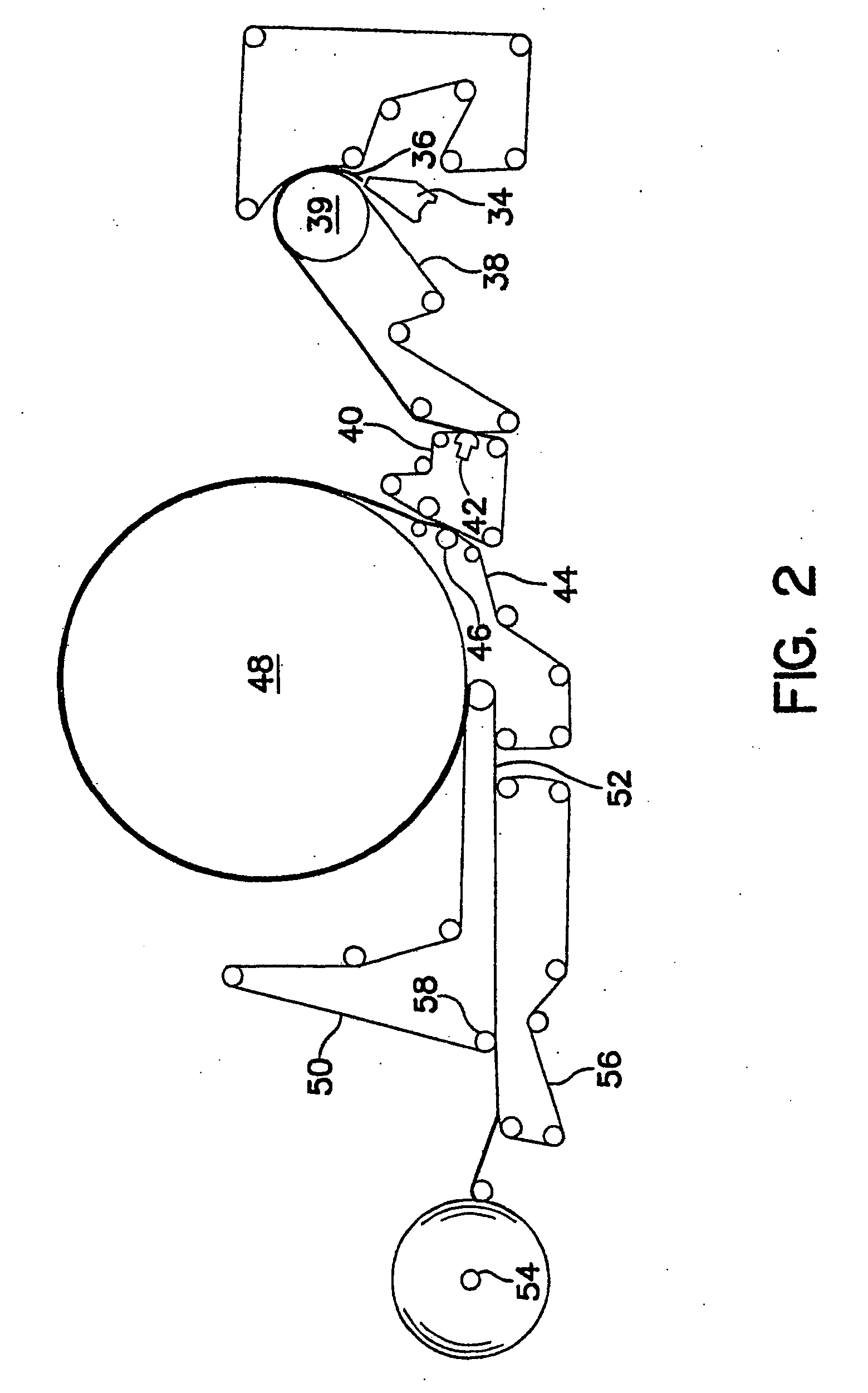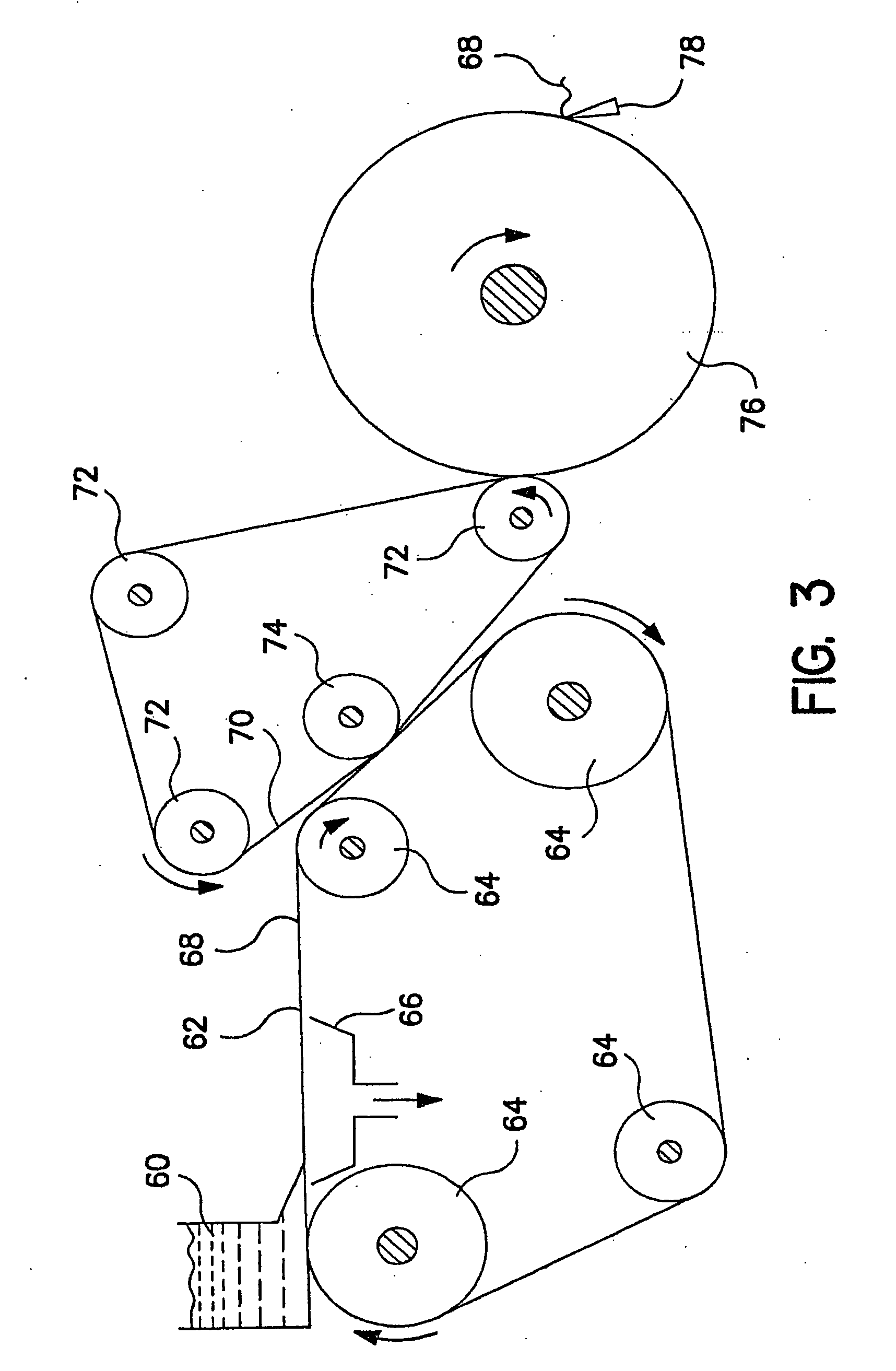Embossed tissue products
a tissue product and embossing technology, applied in the direction of press section, non-fibrous pulp addition, patterned paper, etc., can solve the problems of reducing the strength of the web, affecting the softness and/or blocking behavior of the product, and requiring relatively high process costs. , to achieve the effect of improving the strength of the tissue web, significant affecting the softness and/or blocking behavior of the product, and preserving the strength
- Summary
- Abstract
- Description
- Claims
- Application Information
AI Technical Summary
Benefits of technology
Problems solved by technology
Method used
Image
Examples
example no.1
EXAMPLE NO. 1
[0147] A tissue web was constructed and topically treated with an additive composition made in accordance with the present disclosure. The tissue web was then subjected to an embossing process similar to the one illustrated in FIG. 9. During the embossing process, a pattern roll was heated to a temperature of approximately 80° C. The strength of the embossed tissue web was then compared with the strength of the tissue web prior to embossing.
Tissue Basesheets
[0148] The following process was used to produce a 3-layer uncreped through-air dried base web in a process similar to the process shown in FIG. 2. The basesheet had a basis weight of about 30 gsm.
[0149] Air-dried northern softwood kraft (NSWK) pulp from the Terrace Bay, ON, Canada mill of Neenah Paper Inc. was placed into a pulper and disintegrated for 30 minutes at 4% consistency at 120 degrees Fahrenheit. The NSWK pulp was then transferred to a dump chest and subsequently diluted to approximately 3% consistenc...
example no.2
EXAMPLE NO. 2
[0164] To illustrate the properties of products made in accordance with the present disclosure, various tissue webs were constructed and topically treated with an additive composition. The tissue webs were then plied together and subjected to an embossing process similar to the one illustrated in FIG. 9. During the embossing process, a pattern roll was heated to a temperature of approximately 80° C. The pressure and heat of the embossing process allowed the thermoplastic to flow between the plies creating a multi-ply laminate structure.
[0165] The properties of the embossed laminate structure were compared with the strength of the tissue webs prior to embossing. Additionally, an untreated tissue sample, and a tissue sample treated with an ethylene-vinyl acetate copolymer binder were also tested to show the benefits of incorporation of additive compositions made according to the present disclosure.
Tissue Basesheets
[0166] The following process was used to produce an un...
PUM
| Property | Measurement | Unit |
|---|---|---|
| particle size | aaaaa | aaaaa |
| size | aaaaa | aaaaa |
| particle size | aaaaa | aaaaa |
Abstract
Description
Claims
Application Information
 Login to View More
Login to View More - R&D
- Intellectual Property
- Life Sciences
- Materials
- Tech Scout
- Unparalleled Data Quality
- Higher Quality Content
- 60% Fewer Hallucinations
Browse by: Latest US Patents, China's latest patents, Technical Efficacy Thesaurus, Application Domain, Technology Topic, Popular Technical Reports.
© 2025 PatSnap. All rights reserved.Legal|Privacy policy|Modern Slavery Act Transparency Statement|Sitemap|About US| Contact US: help@patsnap.com



